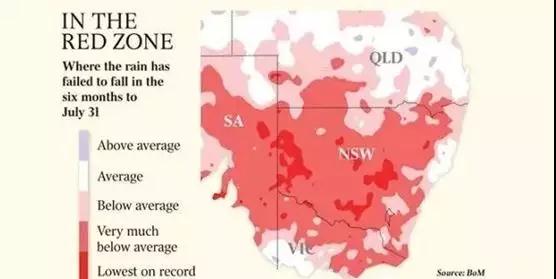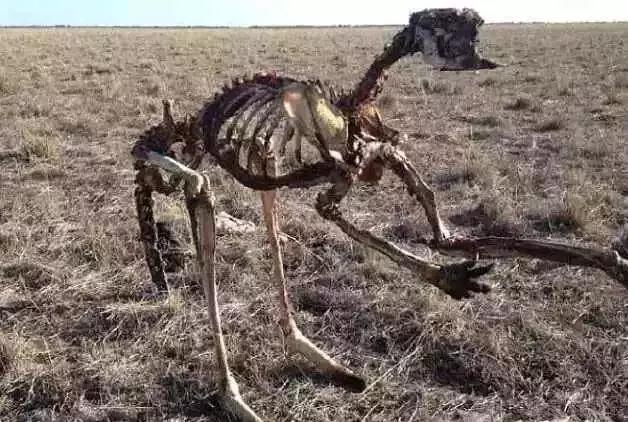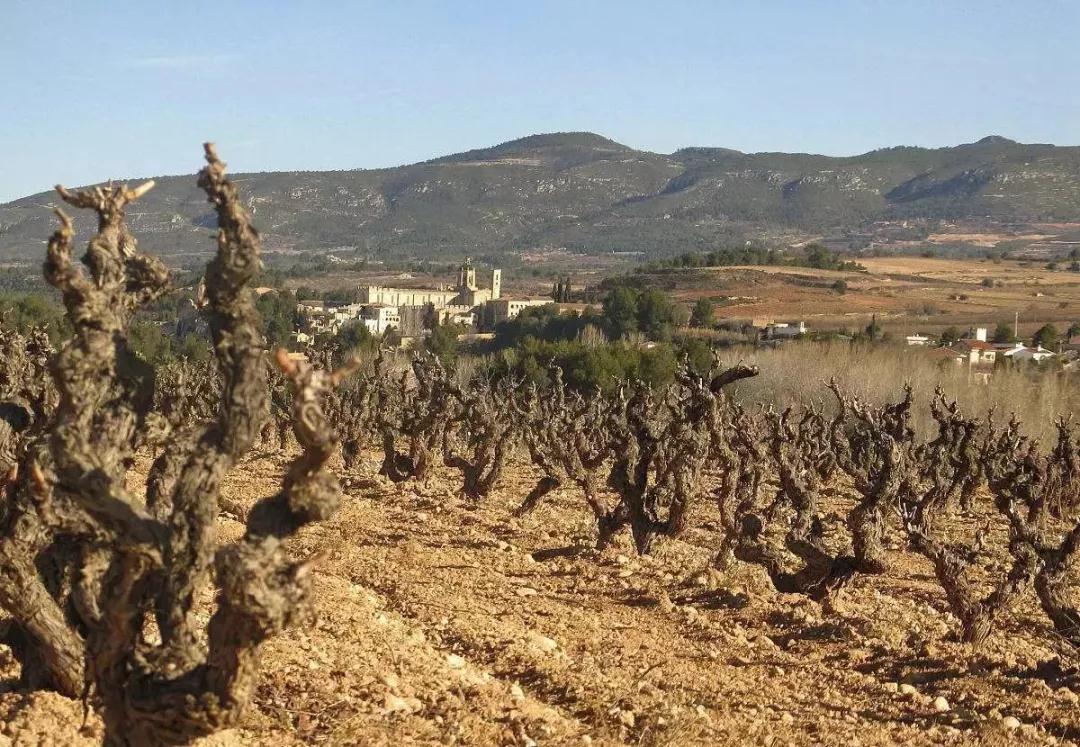Rare Drought Hit Australia,Output Reduced 10% and Price May Rise

Write | WBO Team
Translate and Edit | WBO Kiwi
Australia is now experiencing an unprecedented drought and its agriculture and animal husbandry have been hit hard. Will the extreme weather bring any bad influence to the wine regions in Austrlia?
WBO interviewed many insiders in the industry.
Severe rainfall in some parts of eastern Australia only equals to 1/10 of that in previous years
The extreme drought has been raging in Eastern Australia in the past six months. And the weather bureau predicts that the drought will be even worse in September.
Nearly 90% of the land in New South Wales and Victoria has suffered severe drought in the past six months, and also large dry areas in Queensland and some parts of West Australia, according to weather bureau.
The rainfall in autumn 2018 is 56.54% below average (the lowest was in the autumn of 1902), according to ABC News,
Broken Hill, located in New South Wales, had an average rainfall of 149.6 mm, compared with 18.2 mm this year; Cobar had an average rainfall of 237.6 mm, compared with 24.6 mm this year; Dubbo had an average rainfall of 353.6 mm, compared with 74 mm this year; Tamworth had an average rainfall of 356 mm, compared with 93.4 mm this year.
It can be seen that rainfall in some places only equal to 1/10 of that in previous years.

Kangaroo in New South Wales died of drought
The impact of climate on wine region is expected to show up in November
The drought in Australia affected Victoria and New South Wales wine regions and some other major regions, rainfall in South Australia is abundant.
At present, nearly half of Australian wines produce in South Australia, while New South Wales accounts for about 1/3, and Victoria accounts for about 15%.
Vineyards of Australian Vintage scattered in different wine regions such as Victoria, South Australia, New South Wales and West Australia, so the producer has a more intuitive feeling towards the dry climate.
Yuan Jiang, the China director of Australian Vintage, said the drought this year was nationwide and the weather had been relatively hot. Grapes planted in 2017 had already been affected in the first year. And it’s still difficult to assess whether it will have an influence on grape harvest in the second half of year, for they have no idea about rainfall in the following months.
Although it is uncertain whether the weather condition will improve in the second half of the year, Yuan believes that according to the current production situation of the company, production may be reduced.
While some wine critics are optimistic about the output. Rob Geddes MWtold WBO that the impact of extreme weather on wine regions is not that obvious.
First , it is now winter in Australia and it is early to judge grape production because the vines are not yet flowering. The size of grape is known when it blooms.
Second , drought occurs mainly in east and northeast Australia, with few grapes in Queensland, and vineyards in New South Wales are mostly irrigated, though rain shortage happens here, most high quality vineyards could be nourished by irrigation. So the threat may possibly been reduce to minimum.
However, the extreme weather has little impact on South Australia.
Song Shufei, Asia Sales Director in Blaxland Wine Group, which is the second biggest wine suppliers in Barossa, said there is no problem inBlaxland’s vineyards for they have built dams.
But they have to control diseases and pests brought by drought. More precise monitoring of irrigation is needed as well.
"We also pay for irrigation in particularly dry weather, but it hasn't happened for many times this year", Song said.
Song thinks the decline in production is inevitable, but the quality should be better.
Rob Geddes's analysis shows whether Australian wine industry will be affected by extreme weather this year is not expected to show up until mid-November, when grapes are growing at the turn of spring and summer in Australia.

Grassland in Australia
Price of Australian wine rose 7% - 10%, and may rise again later in 2018
According to the latest wine export report released by Wine Australia, the overall export value increased 20% to $ 2.76 billion, which hit the highest growth rate, with total export value of $1.12 billion to China, accounting for 40% of total exports. China is still the largest export market for Australia.
The demand for Australian wine in China has been increasing and prices are rising year by year.
WBO has also learned that according to the former experience, price rise in wine exports has been complete in July this year.
Data showed that average price of Australian wines rose 9% to $3.24 per liter in 2018, average price of bottled wines increased to $5.94 per liter and bulk wines increased to $1.08 per liter.